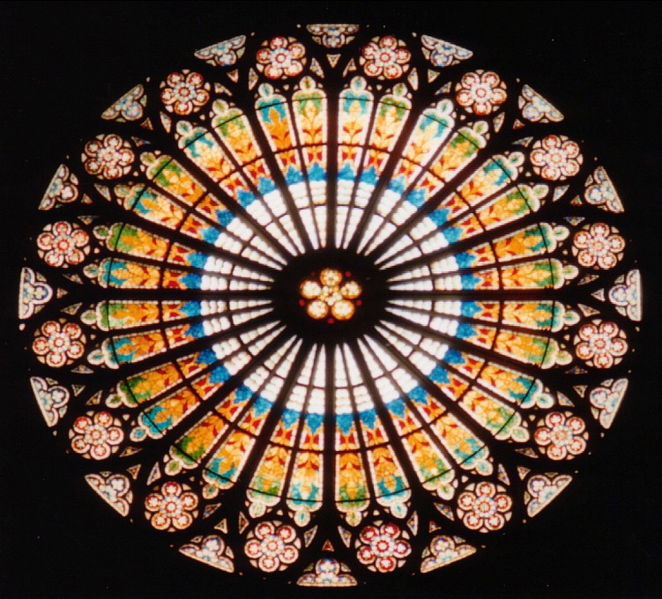
We have in medieval art and architecture a certain influence from theology on the way a project unfolds. For example, one of the visionaries of Gothic architecture, the Abbot Suger of St. Denis, envisioned God as light. This, coupled with the advent of buttressed architecture, allowed for large windows and the used of stained glass. The nave of a Gothic cathedral thus becomes a focal point for light/God to emerge.
Granted, I don't know whether theology and theory share an etymology (the Merriam Webster states the former comes from theo and logia - no translation needed, while theory comes from the Greek theoros, witness), but this does not matter. The point being, as we retrace our artistic/craftsman roots to Pre-Romantic times, we find a prototype of "art/craft driven by theory" (like the Language poets).
So what was the point of contention about art driven by theory again?
Note: This rose window is from the cathedral of Strasbourg.
Comments
- Edgar Allen Poe
this approaches the neutral, so far as I can tell. On the other hand, it may have the conceit of a superego injunction. That is to say, it may be complicating the creative method by paradoxically trying in vain to simplify it.